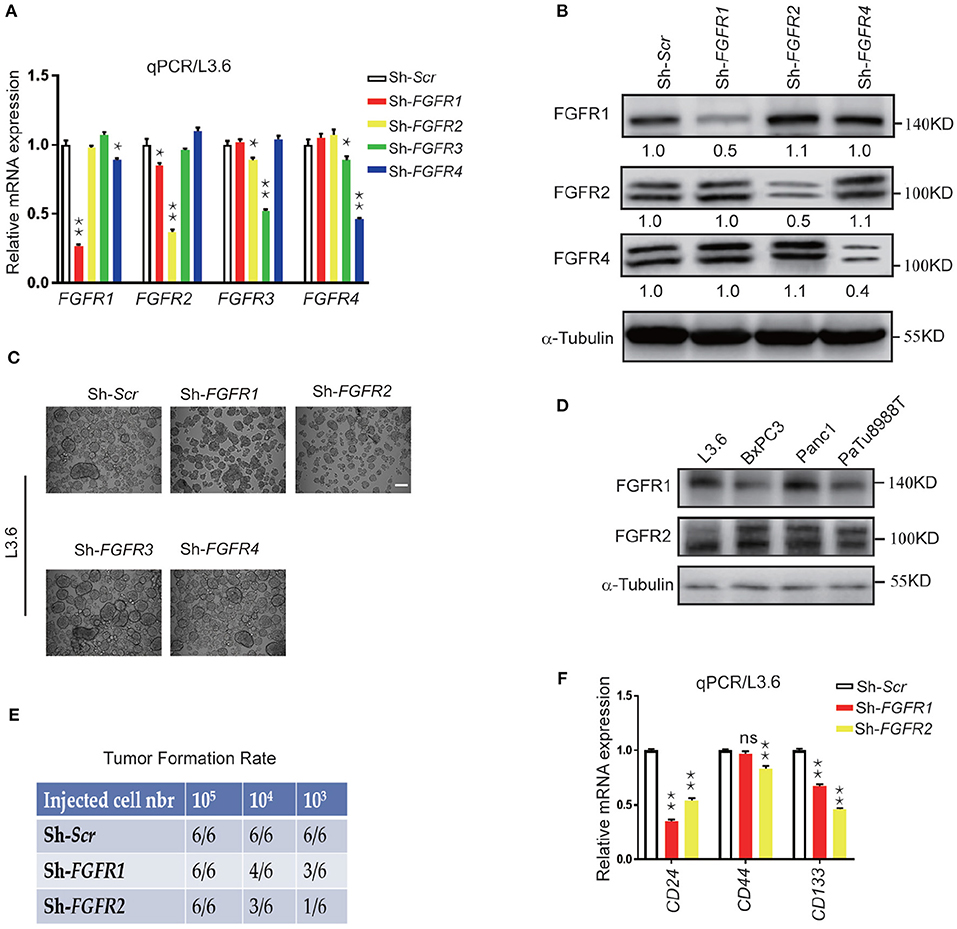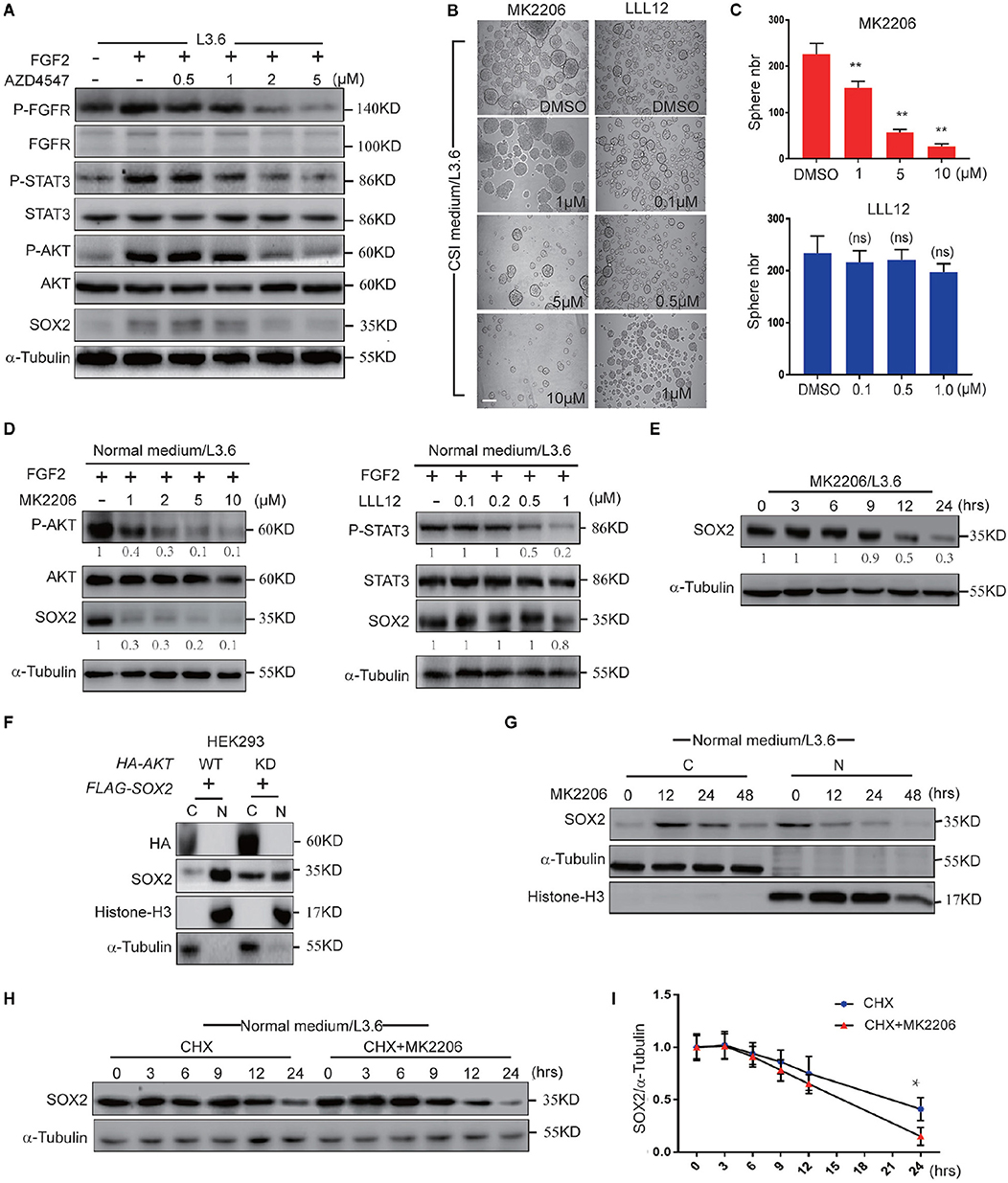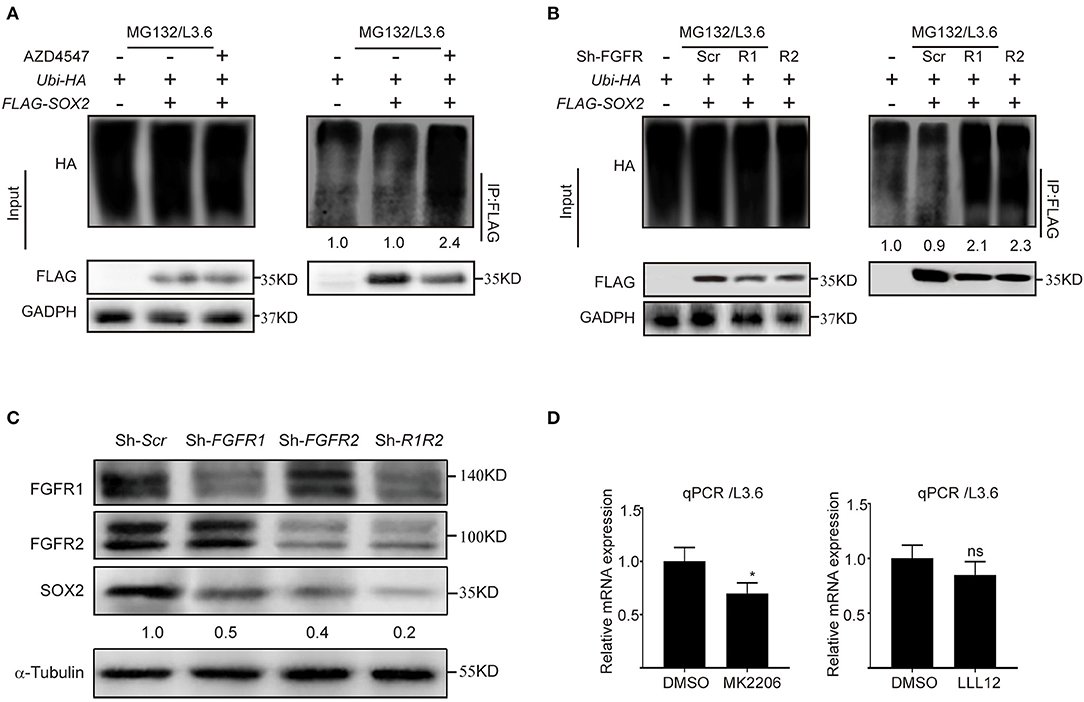
94% of researchers rate our articles as excellent or good
Learn more about the work of our research integrity team to safeguard the quality of each article we publish.
Find out more
CORRECTION article
Front. Cell Dev. Biol. , 02 October 2020
Sec. Signaling
Volume 8 - 2020 | https://doi.org/10.3389/fcell.2020.594589
This article is part of the Research Topic Resident and Ectopic FGF Signaling in Development and Disease View all 9 articles
This article is a correction to:
An FGFR/AKT/SOX2 Signaling Axis Controls Pancreatic Cancer Stemness
 Mei-Yu Quan1
Mei-Yu Quan1 Qiang Guo1
Qiang Guo1 Jiayu Liu2
Jiayu Liu2 Ruo Yang1
Ruo Yang1 Jing Bai1
Jing Bai1 Wei Wang1
Wei Wang1 Yaxin Cai2
Yaxin Cai2 Rui Han1
Rui Han1 Yu-Qing Lv3
Yu-Qing Lv3 Li Ding4
Li Ding4 Daniel D. Billadeau4
Daniel D. Billadeau4 Zhenkun Lou4
Zhenkun Lou4 Saverio Bellusci2,5
Saverio Bellusci2,5 Xiaokun Li1*
Xiaokun Li1* Jin-San Zhang1,2*†
Jin-San Zhang1,2*†A Corrigendum on
An FGFR/AKT/SOX2 Signaling Axis Controls Pancreatic Cancer Stemness
by Quan, M.-Y., Guo, Q., Liu, J., Yang, R., Bai, J., Wang, W., et al. (2020). Front. Cell Dev. Biol. 8:287. doi: 10.3389/fcell.2020.00287
In the original article, there was a mistake in Figures 2C, 6B, and S3C as published. The control tubulin immunoblot shown in Figure S3C and microscopy of sphere-formation assay in Figures 2C and 6B were redundantly used. The corrected Figures 2C, 6B, and S3C appear below.

Figure 2. Genetic silencing of FGFR expression leads to reduced stemness in vitro and tumor formation in vivo. (A,B) Expression of FGFRs by qPCR and western blot in L3.6 cells upon silencing specific FGFRs. Numbers below the blots are quantifications for three independent experiments. (C) Sphere formation assay in L3.6 cells following specific FGFR knockdown and quantification of sphere numbers for three independent experiments. Scale bar: 200 μm. (D) FGFR1 and FGFR2 protein expression by western blot in several pancreatic cancer cell lines. (E) Tumor formation rate 3 weeks following the subcutaneous inoculation of different numbers of L3.6 cells to nude mice. (F) Expression of stemness markers CD24, CD44, and CD133 by qPCR in L3.6 cells upon silencing of FGFR1 or FGFR2. *p ≤ 0.05, **p ≤ 0.01.

Figure 6. FGFR regulates SOX2 mainly through AKT. (A) Western blot analysis of key FGFR downstream pathways in L3.6 cells treated with different doses of AZD4547 together with FGF2 (10 ng/ml) for 12 h. (B) Sphere formation assay using L3.6 cells treated with different doses of MK2206 (AKT inhibitor) and LLL12 (STA3 inhibitor). Scale bar: 200 μm. (C) Corresponding sphere number quantification for three independent experiments. (D) Western blot analysis of pathway inhibition efficiency of MK2206 and LLL12 for 24 h. Numbers below the blots are quantifications for three independent experiments. (E) Western blot was performed to quantify SOX2 expression levels upon MK2206 (2 μM) treatment in L3.6 cells at indicated time points. Numbers below the blots are quantifications for three independent experiments. (F) SOX2 detection in cytoplasmic and nuclear fractions upon transfection with AKT-WT or AKT-KD in HEK293. (G) SOX2 detection in cytoplasmic and nuclear fractions upon MK2206 (2 μM) treatment at different time points. (H) Western blot was carried out to quantify SOX2 expression level upon treating with CHX (50 μg/ml) with and without MK2206 (2 μM) in L3.6 cells at different time points. (I) Corresponding quantification for three independent experiments. *p ≤ 0.05, **p ≤ 0.01.

Figure S3. (A) Analysis of SOX2 ubiquitination in L3.6 cells with or without AZD4547 (2 μM) in the presence of MG132 (20 μM) to block degradation. Numbers below the blots are quantifications for the blots; (B) SOX2 ubiquitination analysis in control cells vs. FGFR1 and FGFR2 knockdown cells. Numbers below the blots are quantifications for the blots; (C) Western blot was used to detect FGFR1, FGFR2 and SOX2 expression upon FGFR1, FGFR2 and double knockdown in L3.6 cells. Numbers below the blots are quantifications for the blots; (D) Quantification of SOX2 mRNA levels following 24 h of MK2206 (1 μM) treatment or LLL12 (0.5 μM) treatment.
The authors apologize for these errors and state that these corrections do not change the scientific conclusions of the article in any way. The original article has been updated.
Keywords: FGFR, SOX2, pancreatic cancer, stemness, sphere-formation assay
Citation: Quan MY, Guo Q, Liu J, Yang R, Bai J, Wang W, Cai Y, Han R, Lv Y-Q, Ding L, Billadeau DD, Lou Z, Bellusci S, Li X and Zhang JS (2020) Corrigendum: An FGFR/AKT/SOX2 Signaling Axis Controls Pancreatic Cancer Stemness. Front. Cell Dev. Biol. 8:594589. doi: 10.3389/fcell.2020.594589
Received: 13 August 2020; Accepted: 25 August 2020;
Published: 02 October 2020.
Edited and reviewed by: Nan-Shan Chang, National Cheng Kung University, Taiwan
Copyright © 2020 Quan, Guo, Liu, Yang, Bai, Wang, Cai, Han, Lv, Ding, Billadeau, Lou, Bellusci, Li and Zhang. This is an open-access article distributed under the terms of the Creative Commons Attribution License (CC BY). The use, distribution or reproduction in other forums is permitted, provided the original author(s) and the copyright owner(s) are credited and that the original publication in this journal is cited, in accordance with accepted academic practice. No use, distribution or reproduction is permitted which does not comply with these terms.
*Correspondence: Xiaokun Li, WGlhb2t1bmxpQHdtdS5lZHUuY24=; Jin-San Zhang, Wmhhbmdfamluc2FuQHdtdS5lZHUuY24=
†ORCID: Jin-San Zhang orcid.org/0000-0002-4436-9593
Disclaimer: All claims expressed in this article are solely those of the authors and do not necessarily represent those of their affiliated organizations, or those of the publisher, the editors and the reviewers. Any product that may be evaluated in this article or claim that may be made by its manufacturer is not guaranteed or endorsed by the publisher.
Research integrity at Frontiers

Learn more about the work of our research integrity team to safeguard the quality of each article we publish.